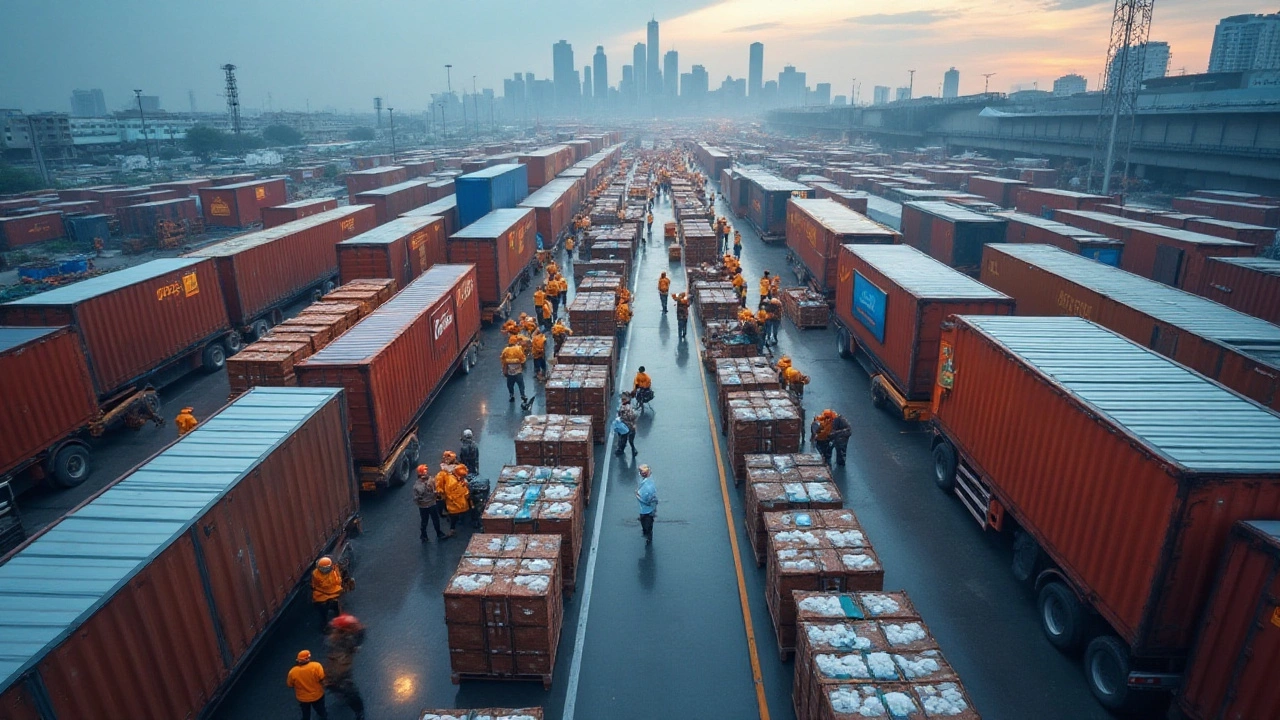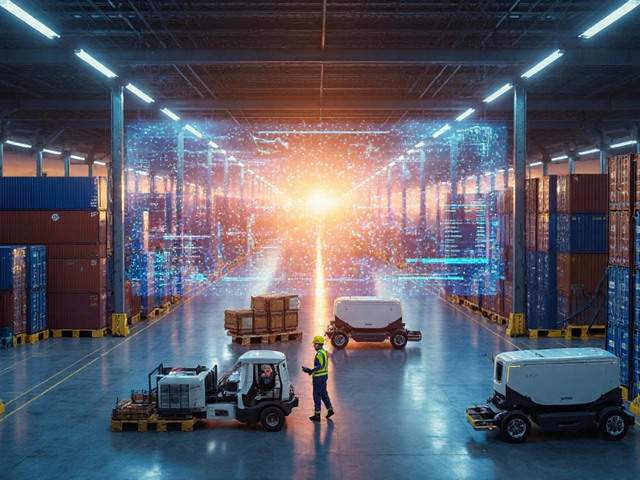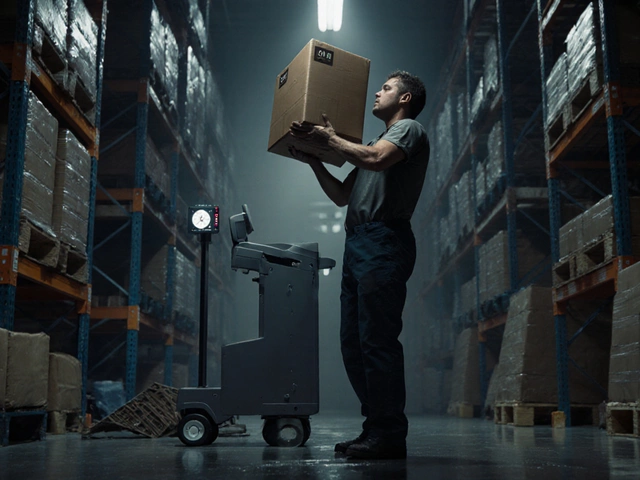Walmart is a name synonymous with retail, but there's an entire ecosystem behind those bustling aisles and neatly stacked shelves. The key to Walmart’s success lies not just in its competitive pricing or extensive product range, but in a logistics network that powers its operations with remarkable efficiency.
At its core, Walmart harnesses an immense logistical framework that extends from the smallest supplier to the largest distribution center. It's a well-oiled machine, working tirelessly to ensure that products get from point A to point B at breakneck speed and with precision. You might wonder: is Walmart chiefly a retailer or is it, effectively, a logistics company?
This question merits exploration, as Walmart's logistics prowess plays a crucial role in its global operations. From the way it uses cutting-edge technology to streamline its supply chain to the strategies it employs to tackle logistics challenges, there’s a lot going on behind the scenes. Let’s take a closer look at how Walmart brings goods to your cart with such expertise.
- Walmart's Logistics Infrastructure
- Innovations in Supply Chain Management
- Integrating Technology in Logistics
- Logistical Challenges and Strategies
Walmart's Logistics Infrastructure
Walmart's logistics infrastructure is nothing short of a marvel in the retail world. The company's intricate network is designed to keep its stores stocked, its shelves full, and its customers happy worldwide. At the heart of Walmart's logistics operation are its distribution centers. With over 150 strategically placed across the United States alone, these centers are the lifeblood of Walmart's supply chain, processing millions of goods that flow in and out to more than 11,000 retail locations globally.
The efficiency of this system lies in its coordination, where technology meets logistics on a grand scale. Walmart employs cutting-edge technology to manage its supply chain with precision. The company utilizes a highly sophisticated satellite system which links its stores, distribution points, and vendors together seamlessly. This network allows Walmart to track its products down to the minute, ensuring inventory levels remain optimal. A Forbes article once highlighted Walmart’s ability to maintain ‘no-store-is-too-far’ delivery efficiency with unparalleled precision and speed; a feat achieved through meticulous planning and a never-ending quest for logistical superiority.
Another key component of Walmart's logistics framework is its private fleet of trucks, one of the largest in the world. This fleet gives the company control over shipping, reducing reliance on third-party carriers and minimizing logistic challenges that arise from contracting outsources. Moreover, the efficiency of this fleet is bolstered by Walmart's commitment to sustainability. Each vehicle incorporates advanced technology to ensure reduced emissions and increased fuel efficiency. An interesting tidbit is that Walmart’s implementation of fuel-efficient trucks has cut mileage by millions annually, contributing positively to both the environment and its bottom line.
Integration of Technology in Infrastructure
Technology plays an equally vital role in managing the logistical infrastructure. Walmart's use of RFID technology has transformed inventory management, turning what was once a labor-intensive manual task into a streamlined process. These RFID tags allow products to be tracked in real-time across the entire logistics chain, paving the way for more accurate stock management and quicker turnaround times from the order to delivery. The result is fewer stockouts, better customer satisfaction, and an efficiently run logistics operation that is second to none.
Moreover, automation continues to revolutionize how Walmart operates its warehouses and interacts with its logistics infrastructure. Robotics and automated systems help in packaging, sorting, and dispatching products, which reduces human error and boosts productivity. This strategic deployment not only saves time but also improves the accuracy of operations. In a recent interview, a Walmart executive noted that automation will branch deeper into logistics in the coming years, setting a new standard for efficiency and scale.

Innovations in Supply Chain Management
Walmart has long been at the forefront of logistics and supply chain management, not just because of its immense scale but due to its pioneering ways of making the supply chain more efficient. The company has turned what some might see as mundane tasks involved in supply chain management into a strategic advantage. This mastery begins right at the very source, with its suppliers. Walmart collaborates closely with each supplier, fostering relationships where transparency is king. This openness allows Walmart to streamline ordering, reduce redundancies, and cut costs by eliminating unnecessary overheads. It's a real game-changer in the world of wholesale and retail, and many companies still look towards Walmart as the benchmark of efficiency.
The use of technology is another cornerstone of Walmart's supply chain innovations. The introduction of sophisticated data tracking systems allows for the meticulous monitoring of inventory levels across every store, reducing discrepancies and minimizing the dreaded out-of-stock scenario. Let’s not forget the role of automation in their distribution centers, where robots and automated systems work in tandem to sort, package, and dispatch goods with uncanny precision. These technologies, while enhancing speed, sport another crucial benefit: they free up human workers to take on more critical thinking roles within the company.
A particularly noteworthy innovation in Walmart’s toolbox is the use of RFID technology. By deploying Radio Frequency Identification, Walmart has been able to enhance inventory visibility at a granular level. RFID tags help in keeping track of every product as it moves from the warehouse to the shelves. This method not only ensures better stock management but also aids in loss prevention. This degree of control significantly boosts efficiency and allows for real-time inventory updates which, in retail lingo, translates to better customer satisfaction and ultimately, increased sales. As stated by a Walmart executive in a recent interview,
“Understanding when, where, and how products move is crucial to keeping our customers happy and our business competitive.”
Environmental sustainability is becoming increasingly integral to Walmart's supply chain strategies, illustrating their commitment to being a responsibly run company. They have initiated steps aimed at reducing their carbon footprint by switching to more sustainable supply chain practices. These include optimizing transportation to reduce fuel consumption and enhancing the use of renewable energy sources within their operations. A
| Year | Carbon Reduction |
|---|---|
| 2021 | 10% |
| 2022 | 15% |
Additionally, Walmart’s drive to innovate is reflected in their embrace of AI and machine learning to predict customer demand more accurately and manage complex supply chain anomalies. With these powerful tools, they can anticipate purchase trends and adjust distribution strategies efficiently. This agility ensures shelves are stocked with what the customers desire, minimizing waste and maximizing profits. It’s a testament to how even the biggest retail names are willing to adapt and evolve in response to technological advances and market needs.
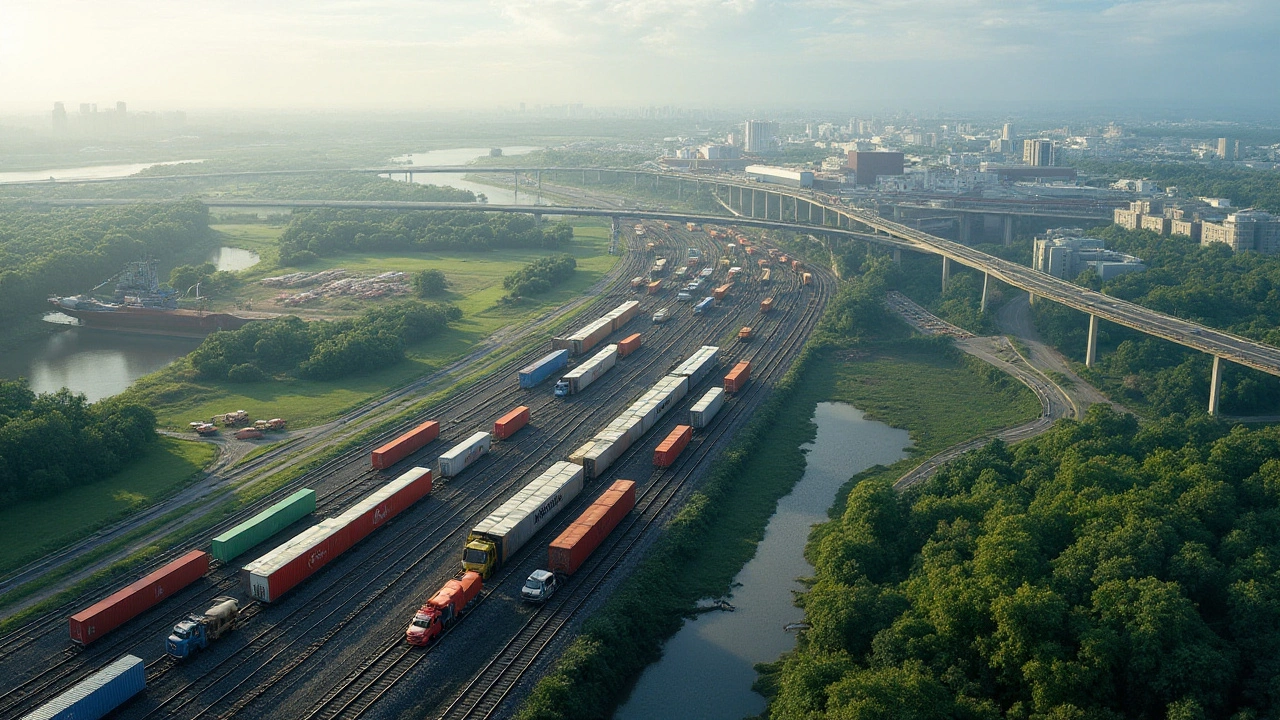
Integrating Technology in Logistics
Walking through Walmart's logistical operations is like taking a stroll down innovation lane, seeing how far technology's broad and flexible arm stretches into the depths of retail supply chains. At the heart of its success in logistics is a sophisticated entanglement of advanced technologies that aim to refine efficiency in every process. One of the primary tools in Walmart's technological arsenal is its use of data analytics. Through meticulous data collection and analysis, Walmart can predict buying patterns and adjust its inventory accordingly, ensuring that shelves are stocked with what customers want the most, precisely when they want it.
Walmart's technological exploits do not end at number crunching. The company has also dived deep into the realm of blockchain technology, especially when it comes to tracing the source of its food products. This ensures traceability from farm to fork, increasing transparency and upholding safety standards—something that customers deeply appreciate. A step into the future can be seen with Walmart's foray into AI-driven robots used in stores and warehouses for tasks ranging from inventory scanning to cleaning floors, relieving human workers from repetitive, monotonous tasks.
Perhaps, the most remarkable shift towards tech integration in Walmart’s logistics might be its commitment to driverless delivery vehicles. By piloting autonomous trucks in various states, Walmart aims to cut costs and increase the speed of delivery, aligning with its goal to provide quick and efficient service to its customers. According to a quote highlighted by Walmart's Senior Vice President of Supply Chain Technology, "We are continually pushing the boundaries of what technology can do for the logistical chain," this showcases the company's commitment to innovation.
Embracing technology also comes with its share of challenges. While the digital transformation offers numerous advantages, implementing such large-scale changes requires robust infrastructure and significant investment, both financially and in training personnel. To address these hurdles, Walmart has invested in educating its workforce through various training programs. The company believes that upskilling employees will help them thrive in a tech-heavy environment and aid in the seamless integration of new systems. With these initiatives, Walmart reaffirms its dual identity as a powerhouse retailer and a pioneering logistics company, leveraging the best of both worlds to serve its customers better and remain at the forefront of the retail industry.
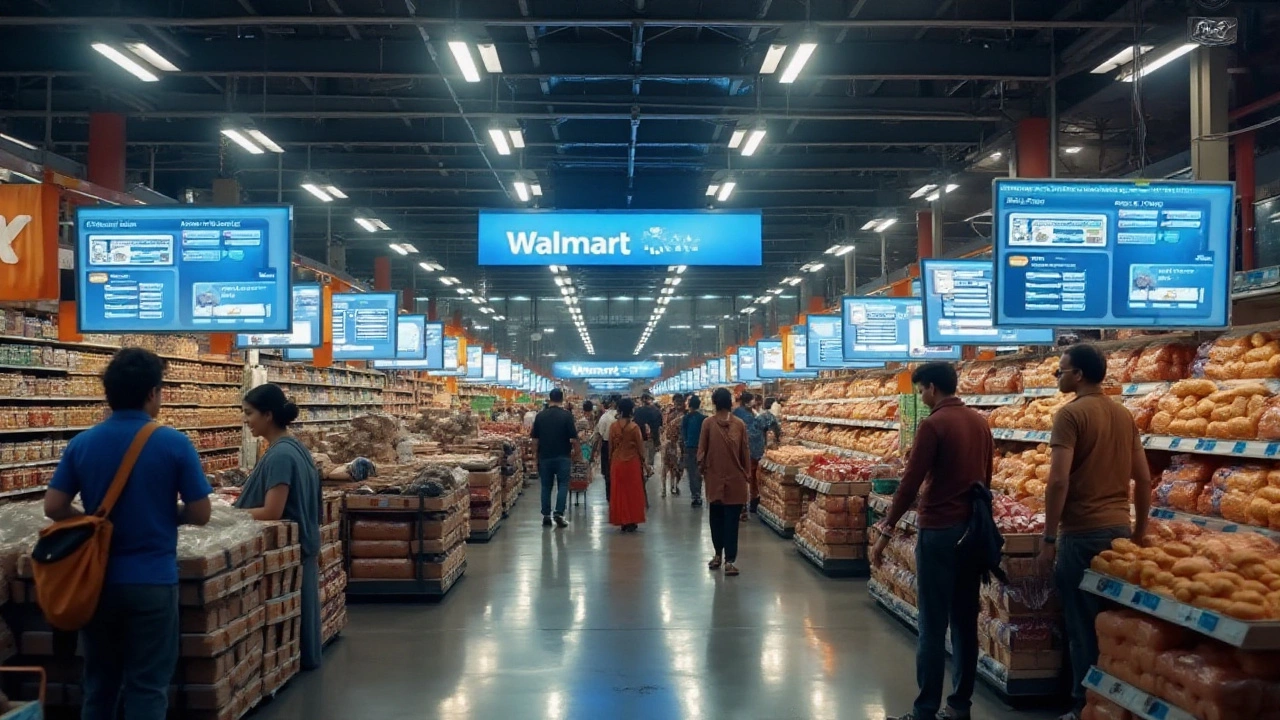
Logistical Challenges and Strategies
Operating on such a grand scale as Walmart does inevitably comes with its share of challenges. With an expansive network that includes countless suppliers and distribution centers worldwide, seamlessly managing it all is no small feat. One of the primary hurdles Walmart faces is maintaining the delicate balance between supply and demand across its vast portfolio of products. It's not just about having goods available; it's predicting what’s needed where, and when, to optimize inventory levels effectively. This involves a constant dance of data and forecast analysis, as unpredictable events — be it a surge in demand due to a cultural trend or supply chain disruptions from geopolitical tensions — can tip the scales unexpectedly.
The pressure isn't only on forecasting. Transportation logistics form another critical component. Efficient transportation means faster restocking times on shelves, ensuring customers find the products when they need them. It requires an intricate management of routes, fuel costs, vehicle maintenance, and perhaps most importantly, the drivers themselves. Finding the sweet spot where costs are minimized and efficiency is maximized often requires Walmart to utilize innovative strategies. This includes leveraging technology such as autonomous trucks and drones for deliveries, which not only promises to cut down time but also reduces operational costs significantly.
Walmart’s logistical prowess also relies heavily on its ability to integrate and utilize advanced technology. The use of data analytics plays a vital role in solving various logistical puzzles. Supply chain data helps predict potential bottlenecks, allowing Walmart to allocate resources more efficiently. For instance, during peak shopping periods like Black Friday, understanding which products will fly off shelves allows for a proactive approach to stock replenishment. Walmart has also rolled out blockchain technology solutions to enhance transparency and traceability through its supply chain, providing a trustworthy system that minimizes the risk of errors or fraud. A report from the World Economic Forum has mentioned,
"Blockchain technology can solve the most significant logistic pain points by enhancing visibility in product tracking."
Moreover, dealing directly with suppliers presents another layer of complexity. With thousands of products sourced from around the globe, navigating customs, tariffs, and import/export regulations is a constant challenge. This is particularly relevant in the post-Brexit era, where agreements and trade rules have evolved, impacting supply chain dynamics with European manufacturers. Walmart tackles these challenges through strategic partnerships and local sourcing whenever possible, reducing dependency on international suppliers and thus mitigating risk. In domestic markets, establishing hubs near critical supplier locations has proven an effective strategy for rapid and cost-effective distribution.
Innovation remains an essential element of Walmart's logistical strategy. For instance, Walmart is continuously investing in its warehouse automation systems. By incorporating robotics and artificial intelligence, the company can streamline its operations - from sorting to packing - making processes faster and reducing human error. Automated systems can run continuously, potentially bringing down labor costs and increasing throughput. There is a perpetual cycle of strategic planning and agile reactions to market changes, allowing the company to remain adaptive and forward-thinking in a rapidly shifting retail landscape.
